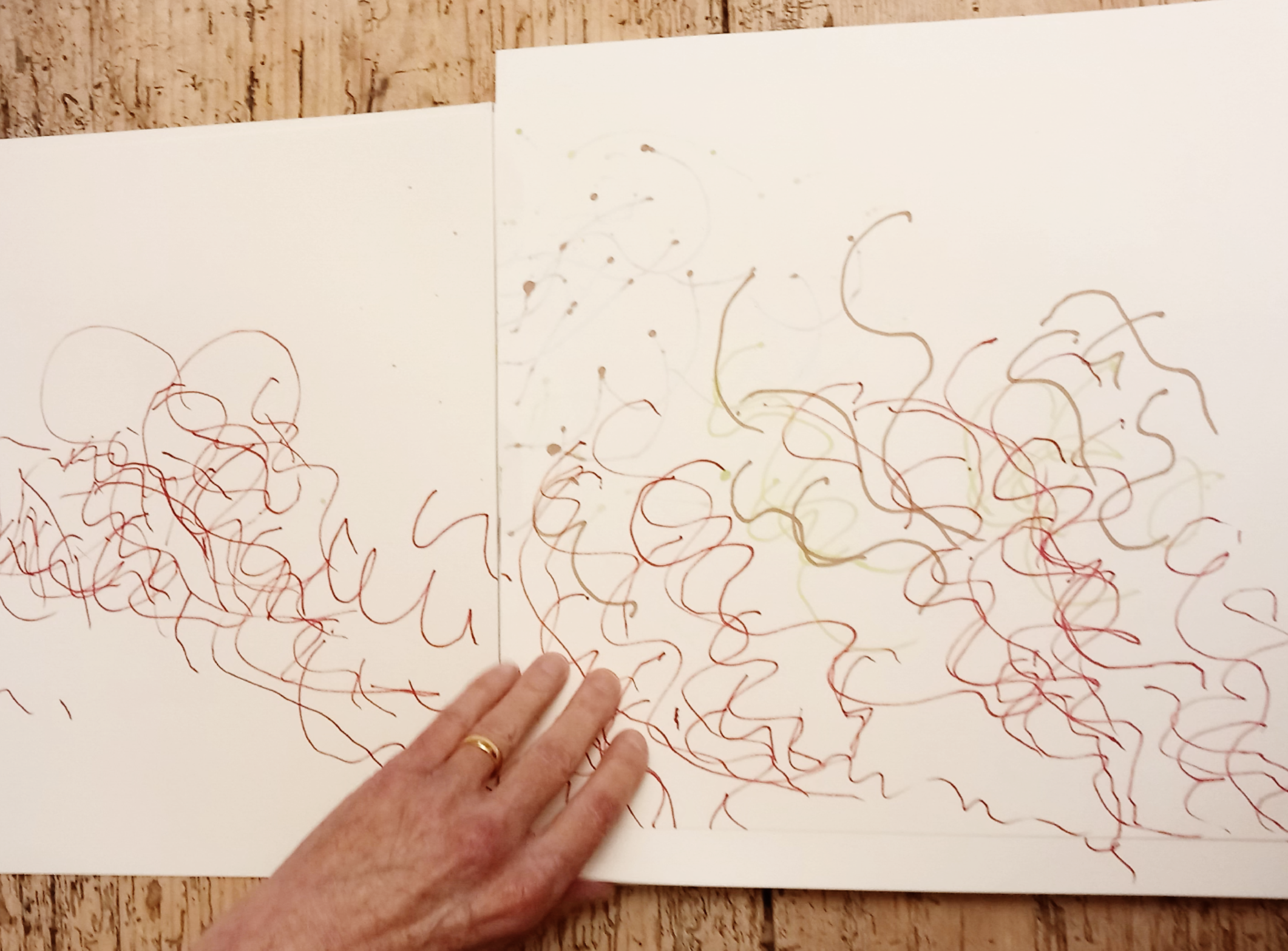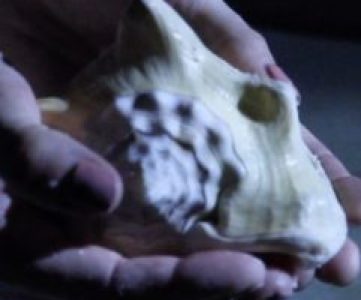TT Journal, ISSUE 5, 20th January 2023
By Florence Mein
When I think of my mum I think of colour: bright, bold patterns and confident brush strokes. To me, these are personality traits as much as her artistic choices. Sadly, when I look at her now, the colours are fading and the brush strokes are shaky – she was diagnosed two years ago with Posterior Cortical Atrophy (PCA) although the signs were there years before.
PCA is an atypical Alzheimer’s disease, a rare form of dementia that begins at the back of the brain where vision and sensory information is processed. It typically affects people from their mid-50s (she is 64). It is caused by changes to the brain cells similar to that of Alzheimer’s disease – but the early stages are very different. So, vision starts to be untrustworthy and she might think:
Is that cup really in front of me? Are there, in fact, two cups? Is that puddle actually an ocean? Are the stairs moving? Where do they start? Eventually, this can progress to a near-complete deterioration and shut down of the visual processing area of the brain. In my mum’s case, by the time she reached this point of the disease we also had most of the other aspects of ‘typical’ Alzheimer’s to contend with. Memory loss, confusion, lack of coordination, inability to find words, etc. Being my mum over the last seven years has not been easy.
And yet, she still draws. She is still creative. Despite the failing eyesight, she is still making patterns and designing. Just as she did throughout her career working with textiles. And she is prolific. She has done probably thousands of drawings. Being creative is her connection to herself – and my connection to her and my memory of who she is. It helps me forget the disease that is becoming more pronounced, instead seeing her for the person she has been her whole life. Although the act of making art is harder she persists. She needs help getting set up but then she is ready and pushing the pen across the paper. I am not sure how much she sees what she is doing or if she has complete control of where the line goes, but the drawings keep coming. In moments of visual and mental clarity she can talk about a particular line she has done, and my opinion on her PCA completely shifts. Although a deteriorating disease, it is not consistent. Through art my mum blooms and PCA retreats.

And this is the person I would like the whole world to see – not the one that struggles to find a chair. I don’t talk to many people about her Alzheimer’s because most people will create their own image and fill in their own blanks as soon as they hear the word. But for anyone who suffers a form of dementia, each person, family and friend of theirs goes through a unique experience.
The real answer to the well-meaning friend who asks, ‘How’s your mum?’ is too complex for such a simple passing question. As we move further into the disease – and I have to look harder for my mum, the one who existed before the dementia – I find her there but I also find someone else. A more vulnerable and open person than the one who drove me to school and kept our house ticking along. Often in situations like this, the parent and child roles switch or waiver. And certainly when I see her, I now cook meals, make sure her laces are tied, help her put her coat on and prompt conversation. And having recently become a mum myself, I cannot rely on her for the support I thought would be there at this stage of my life. The advice, the shared experiences and stories. But I don’t want it to be that we have switched roles because we haven’t – she is still my mum and I still look to her for that even when I know she can’t always meet my expectations. My role is now as her champion and supporter, just as she is still mine. Encouraging her where she used to encourage me, trying to cheer her on and lift her spirits. And so when people ask how she is, I try to focus on the part that isn’t dementia because I don’t want her to be defined by PCA. I want people to see her how she wants to be seen, even if she sometimes struggles to see that person herself.
Drawing brings her back to herself and the bigger picture. Now, two years on from diagnosis, I try to peer through the cloud of dementia. To who she was, somewhere underneath this person I don’t recognise and don’t want but who is becoming increasingly familiar. And art helps to remind me of who she is and how to get back to her. And when I am with her – and it’s hard and sad and I am finding it difficult to remember my mum – I need the same reminders that non-family members do. That yes, she has PCA but she is so much more than that. She is a mother of three. She is creative. She is proud. She loves to walk. She watches Strictly Come Dancing and complains about it. She hates Boris Johnson. She loves dancing in the kitchen. She likes baking cakes for people. She hums when she walks. She enjoys sitting in the sun. She has a glass of wine but only after 6pm. She really wants a dog. She snorts and cries when she laughs. She is bright. She is sad. She is frightened. She is brave. She is caring. She is vulnerable. She is my mum. She is an artist. She is her art. To know who she is you just need to look at her drawings. They are my mum on paper. In all her confusion, annoyance, joy and colour. She is just a squiggly line making her way along the page.
When I told my mum I would like to submit a piece to the journal about us, and her art, she was immediately invigorated. Although a simple thing, it has given us both something to think about and a project to aim for together. I think the idea that others might be interested in seeing her work and that we (her family) felt her art was worthy of showing off has lifted her self-esteem.
The following video features a handful of her drawings alongside conversations I had with my mum about her work. As with most families, this wasn’t always a quiet setting as we had various family members coming in and out – toddlers running around and my ringing phone cutting our conversations off-mid flow. Despite these distractions, it was an enriching experience and something we both felt the benefits of. It gave us both time to sit down and talk to each other.
Joy Mein started her career as a textile designer before moving her patterns onto ceramics and now paper. Her works on textiles and ceramics always featured bold shapes, colours and florals running throughout. Florence Mein is an artist and illustrator who originally trained in performance design, her work focuses on people and places, trying to capture a moment in time. florencemein.com
Useful links for those affected by the above mentioned issues:
https://www.raredementiasupport.org/ – For more information on rare dementias and a good source of support for those dealing with dementia.
https://www.youtube.com/watch?v=jekW8Z93LMw – animation ‘Do I see what you see?’ which gives a good idea of what it is like for people living with PCA specifically.
https://www.alzheimers.org.uk/ – General Alzheimer’s support and information.
